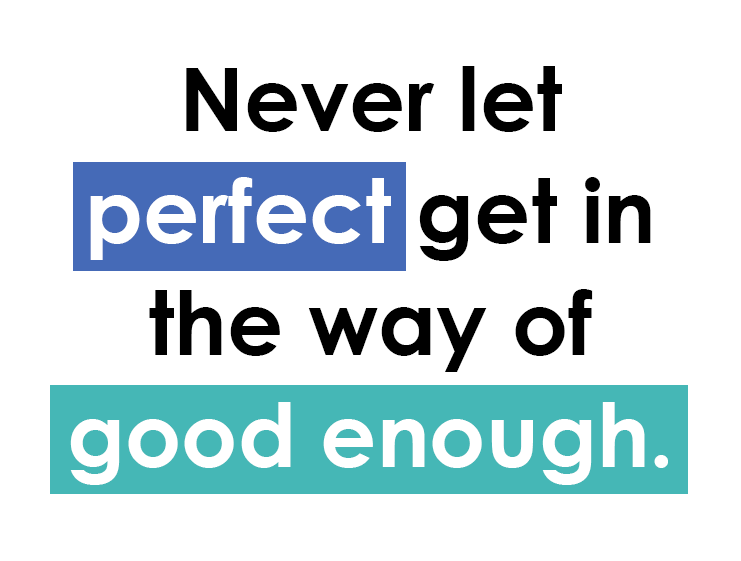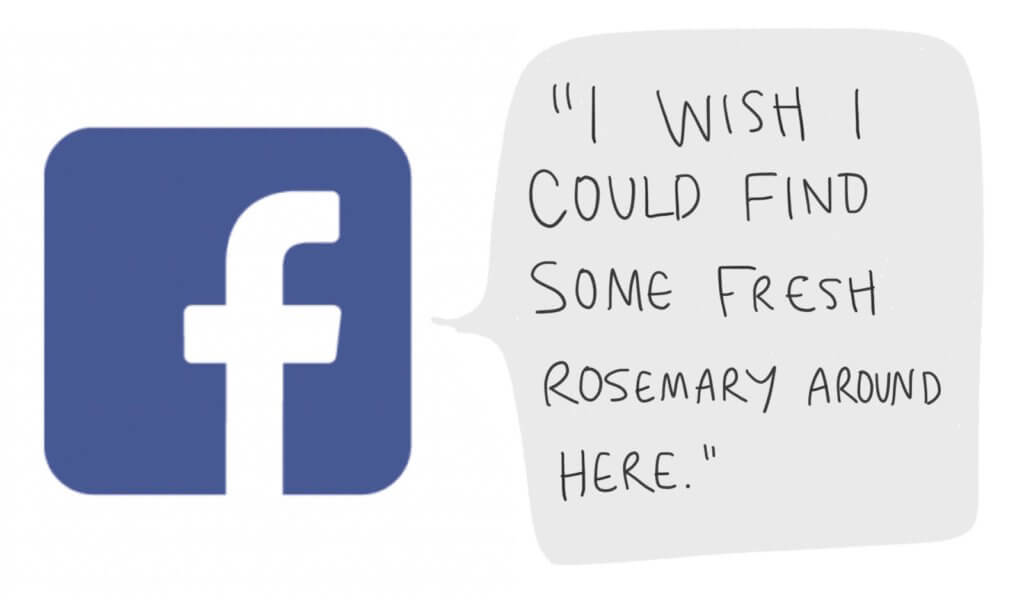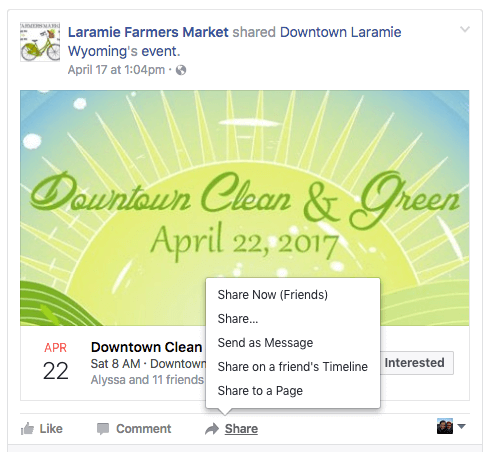Don’t think social media is worth it?
 In farming circles, the phrase “social media” tends to elicit deep sighs and changes in the subject rather than excitement.
In farming circles, the phrase “social media” tends to elicit deep sighs and changes in the subject rather than excitement.
Using social media for marketing can seem like a frivolous pursuit, and that skepticism is accelerated by myths about social media marketing like, “I have to be extroverted” or “nobody wants to hear about the minuscule details of my farm”.
In reality, when you put the potential of social media into context, platforms like Twitter, Instagram, and Facebook can serve as a powerful connection to your customers, farm advocates, and community.
When you have a strong connection to these people, you’re able to collect information on their preferences, values, and the opportunities that they offer. In return, you’re able to grow produce especially for them. In short, social media allows you to produce a closer match to exactly what your customers want. That means that you sell easier, achieve your farm mission better, and grow with a more concentrated sense of purpose than ever before.
When you understand the true potential of social media, you’re left asking the question, “Why wouldn’t I use social media?”
Two roadblocks keeping you from getting the most out of social media
Unfortunately, there are two strong reasons that farmers just like you aren’t using social media.
1) They don’t know how.
The first is that they don’t know how. Each social media platform is a little bit different, and each is subject to a plethora of cultural innuendos and trends.
This leads people to believe that they have to be a master of the platform before jumping in. But since the best way to learn on social media is by doing (and occasionally failing) and doing again, this misconception bars them from actually mastering the platform! The negative feedback loop locks farms out of a huge area of potential.
2) They don’t have the time.
The second reason that farmers don’t use social media is that they don’t have the time. Creating a post – even a simple post – can suck away a lot of time as you find just the right phrasing, choose the perfect hashtags, and choose a good photo.
The trick to hurdling this roadblock is getting over perfectionism. A saying that we like to motto-ize here around the Bright Agrotech HQ is, “Never let perfect get in the way of good enough.” Set achievable standards, create the post, then let it go. It doesn’t have to be perfect, and often consistent quantity is more important than high quality.
Get started with Facebook
Now that you’re armed and ready to overcome those obstacles, it’s time to get started. Harness your momentum and create your farm’s social media accounts.
Once you’re on social, you can harness it to use for your farm’s benefit. Here are some of the best ways to use social media.
Which platform is for me?
Choose a platform that’s easy for you to use. ![]() Facebook is the easiest and most robust place for farms to collect information and participate in groups and events, but it can take a bit more time to use. Most people are on Facebook; take a break and set up your farm’s Facebook profile now.
Facebook is the easiest and most robust place for farms to collect information and participate in groups and events, but it can take a bit more time to use. Most people are on Facebook; take a break and set up your farm’s Facebook profile now.
Twitter is straightforward and low-time but doesn’t get the same level of engagement as Facebook.
Instagram is a simple photo-based platform. It’s easy to use but won’t have as much engagement.
Other platforms like LinkedIn and Tumblr aren’t as heavily trafficked in this industry but might be good to have run as a background investment.
To choose the right one for your farm, take an hour and explore each of them a little!

If you’ve got a smartphone or tablet, download the apps for social media platforms. If you’re on a computer, most of them are accessible, although you can’t post to Instagram from desktop/laptops.
Use social media to collect customer info
There are three main avenues that you can use on almost every social media platform to collect useful info about your customers and potential customers.
First, you can figure out which topics they’re interested in.
Why this is useful:
What people share and say on social media is a window that illuminates their values and desires. This helps you because you can tell what they want and how to give it to them.
 For instance, if you notice that a lot of people are commenting on your local farmers market page questions like, “Does anybody know where I can get fresh rosemary?” then you know that there’s at least one person who would probably buy rosemary from you if you grew it.
For instance, if you notice that a lot of people are commenting on your local farmers market page questions like, “Does anybody know where I can get fresh rosemary?” then you know that there’s at least one person who would probably buy rosemary from you if you grew it.
If you see that thirty people have shared an article about sustainable farming, that’s something that a number of your potential customers are interested in. Now you can put more time towards sharing the fact that your farm is a sustainable operation.
If you listen to your customers speak and support certain ideas, you’ll get a lot more direction on how you should be marketing and selling to them. If you’re not listening, you won’t have the opportunity to raise your hand and say, “Me! I have the thing that you’re looking for.”
How to do it:
Every social media platform is organized. Facebook has groups, pages, and a number of ways to search the site.
A great place to start is searching for relevant topics and values that your farm has to offer. See if any of the markets you’re interested in have their own pages and groups. (Farmers’ markets often have their own pages, for example.) Join them! Subscribe to notifications, and check in every week or every couple days to tune into the buzz.
 Twitter, on the other hand, is organized largely by hashtags, which mark different posts by the topic that they include.
Twitter, on the other hand, is organized largely by hashtags, which mark different posts by the topic that they include.
Like Facebook, you can search for relevant topics and follow certain entities. Look up markets, local food personalities, local news outlets, etc. The same goes for Instagram.
Second, you can use polling & surveys to get answers to specific questions
Why this is useful:
You can learn a lot by listening, but sometimes you have to butt in and ask specific questions.
If you can control the questions you ask, you’ll get answers that are extremely applicable to solving a certain problem.
For instance, you might be able to tell which crops people are interested in by following a group news feed, but that information could be a little unbalanced if it was given for a purpose other than yours. If you ask people directly, “which crop would you like to see at the farmers’ market”, you’ll get answers meant for that question. This kind of information is more reliable and quantifiable than “buzz”.

You can do a LOT with polling and surveys. Think about asking questions like,
- “What’s most important to you when buying produce?” (Sustainability, organic, water conservation, local, etc.) This will give you an idea on how to market your produce and might even impact your growing technique.
- “Which veggies should I grow for you?” This will help with an initial “eyeball” of demand and could suggest a need for market research or crop testing.
- “Would you rather buy packaged produce or harvest it yourself?”
- “How much lettuce does your family eat each week?”
How to do it:
Each platform offers an opportunity to do this but in different ways. Facebook has an actual polling function where you can publish a poll as a post with multiple choice answers.
One of the challenges of an actual poll is participation. A structured response can put people off, even if it’s easy to select an option. Make your posts personal, ask questions that are interesting to your target audience, and if you can offer some kind of reward—even if it’s just a thumbs up when they answer.
The other and more popular option for surveying is to publish a post that asks a simple question.
People can respond simply by commenting or replying to the post. It’s not very structured, which can make the results a bit harder to analyze, but also allows people the freedom to say what they want, how they want.
Third, you can use social media as a direct communication tool
Why this is useful:
You can have conversations as you sell at the farmers’ market and when your CSA customers come to pick up produce, but some markets make it hard to get face time with your customers. If you’re selling to a grocery store, you might converse with the produce manager, the general manager, and an employee or two, but you usually don’t get much time talking the folks who are actually eating your produce. Even if you do, you’re limited to people who come at a certain time.
Every extra conversation is valuable. Social media is a way to add to that communication and get more feedback from your customers.
How to do it:
Since social media is designed to be, well, social—direct communication is one of the simplest things to do. Anytime you have a reaction to an article, an answer to a question, or a comment on a trend, you can reply. Every time you do so, people see your name and logo, and you get a chance to share your vision in some way.
Just click “reply”. This is universal on almost every single platform.
You can learn a lot from social. But the benefits of social media stretch beyond listening and speaking. They give you a prime gate through which to collect leads.
Use social media to collect leads
What are leads?
Leads are potential customers, advocates, and partners. They’re seeds that haven’t quite grown into mature plants yet. Not all of them will pan out, but the more leads you have, the more opportunities you have to get sales, spread word about your farm, and take opportunities for growth.
Leads are born anytime somebody expresses an interest in being involved with your farm. Usually, they’re quantified when you get their contact info.
For instance, the guy in the “collect customer info” section above who asked, “Does anybody know where I can get fresh rosemary?” has expressed interest in being involved with your farm (by buying rosemary). But that information is useless unless you contact him.
There are several methods you can use to make new friends and collect leads.
Join groups
Join relevant groups. There are several types of groups to consider: market groups, value groups, and learning groups. Market groups are centered around a certain market or type of market. Value groups are centered around a value (like sustainability).
These two group types are going to be where you get the most leads. (Although learning groups are useful for other reasons. The Upstart University Facebook Group [exclusive to program members], for example, is a great place for troubleshooting and idea sharing.)

If you’re an Upstart U student, there’s no better place to throw around ideas and learn about your farm than the Facebook group.
Host and attend online events
You’ll come across leads passively as you listen and respond to buzz like we previously discussed, but you can also take the initiative to collect leads. Online events are a great networking opportunity for farmers. Some examples of online events are webinars, online parties, or hashtag events.
To find useful webinars, you can subscribe to folks like Upstart University and the USDA newsletter as well as search for webinars (though that can be hard to remember).
Online parties are less common for farmers but can be a way to show off new wares and create an opportunity for online sales.
Hashtag events are where hashtags are used to mark conversations. Participate in hashtag events by looking at when the hashtag usage peaks and posting then.
Share for more exposure
Finally, you can reach more eyes by simply sharing about your farm and other things that you care about.
Variety is key to reaching more people. If you’re looking for local sales, include plenty about local events, articles, and characters.
Use social media for advertising and news coverage opportunities
When you think about social media marketing, you probably think about banner ads and flashing sidebars. These are just a part of social media marketing but are a significant opportunity that could be helpful to your farm.
Another opportunity that comes up in social media is a connection with local media outlets. If you’re growing indoors, using vertical farm equipment, or utilizing hydroponics or aquaponics, then you’re doing something that is still fairly new and innovative. You might find your farm the subject of local news outlets. This can be a great way to get the word out about your farm and your farm’s brand.
Get started and learn more
For more tips, tricks, and tools for making social media an easy task on your farm stay tuned! You can get weekly updated on new content by signing up for our newsletter in the sidebar. >>>
Take a course on social media for farmers
Nick Burton is the coach to many hydroponic & farm-to-market agricultural operations and has been working in the green industry for over twenty years. In this actionable course, Nick reveals tips and knowledge accumulated over the course of two decades.
Join us in the Social Media Marketing for Farmers course through Upstart University.



Great article! One of the best social media options for farmers is AgFuse.com which is basically a LinkedIn for professionals in agriculture. It’s a great place to network and learn.